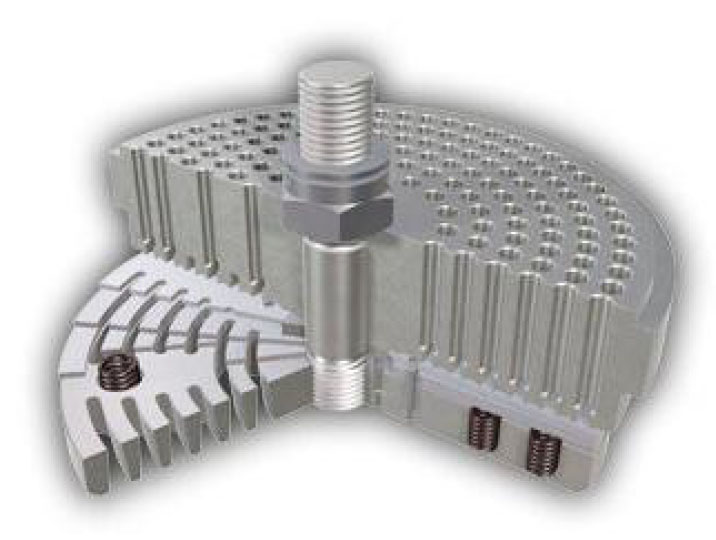 Based on field data (OREDA book, etc.), the reciprocating compressor component that often fails is the compressor valve, followed by the cylinder liner or piston. Almost all compressor valve failures are unplanned maintenance that can increase maintenance costs or cause production to stop. If the compressor is still operating with a damaged valve (only leaking) then the compressor efficiency will be reduced because the process gas only circulates around the cylinder. Various technologies have been applied to monitor the condition of the compressor valve to obtain better performance. For example, installing temperature sensor on each valve cover to determine the valve temperature trend and so on. Sometimes installing temperature, vibration sensors on each valve cover and pressure sensors on cylinders is still considered an expensive investment. So monitoring conditions using vibration and thermodynamic technology periodically (by trending) will be easier and more precise to do.
Based on field data (OREDA book, etc.), the reciprocating compressor component that often fails is the compressor valve, followed by the cylinder liner or piston. Almost all compressor valve failures are unplanned maintenance that can increase maintenance costs or cause production to stop. If the compressor is still operating with a damaged valve (only leaking) then the compressor efficiency will be reduced because the process gas only circulates around the cylinder. Various technologies have been applied to monitor the condition of the compressor valve to obtain better performance. For example, installing temperature sensor on each valve cover to determine the valve temperature trend and so on. Sometimes installing temperature, vibration sensors on each valve cover and pressure sensors on cylinders is still considered an expensive investment. So monitoring conditions using vibration and thermodynamic technology periodically (by trending) will be easier and more precise to do.

Compressor Valve Working Principle
The working principle of a reciprocating compressor valve is like a check valve. Where the valve operates based on the pressure difference between valves. For a suction valve, when the pressure in the cylinder is below the suction manifold (bottle) pressure, the suction valve will open and gas will flow into the cylinder. And the suction valve will close if the pressure in the cylinder chamber is above the suction manifold (bottle) pressure. For a discharge valve, the valve will open when the cylinder pressure is above the discharge manifold (bottle) pressure and closes when the cylinder pressure is below the discharge manifold (bottle) pressure. Compressor Valve Condition and Valve Temperature When the compressor valve fails, the valve cannot hold the pressure difference effectively. This allows gas to escape or leak through the valve. If the suction valve leaks, the process gas escapes into the suction manifold (bottle). Meanwhile, in the case of a discharge valve leak, the process gas escapes back into the cylinder space. If this leak occurs, the same process gas will be recirculated where the gas will continue to be compressed so that the effect will increase the temperature of the compressor valve and manifold (bottle). If the temperature in the suction or discharge manifold (bottle) increases and exceeds the set temperature limit, the protection system will reduce the engine speed or reduce the process gas flow or even turn off the compressor to avoid secondary damage.
 Compressor Condition Monitoring and Case Study
Compressor Condition Monitoring and Case Study
Daun Biru Engineering was awarded to carry out periodic condition monitoring on the Ajax DPC600 unit, an integral engine- compressor (the crankshaft is used by the engine and compressor, example picture is Dresser-Rand, other product is Cooper- Bessemer), low speed, three stage compressor and a water-cooled engine and compressor cylinder liner. The conmon technology used to monitor the performance conditions of this reciprocating compressor are trending of process parameters (pressure, temperature, flow), thermal image, vibrations data (frames, valve vibrations vs crank angle) and thermodynamics (pressure vs crank angle). 1HS1 is a 1 st suction valve at 1 st stage. The 1HS1 vibration data shows a gas leak pattern (red dash line) when expansion, although it is not too large. The head-end side cylinder pressure data shows a compression profile that is rapid decreased (pressure leak
through the suction valve) if compared with ideal condition. The valve temperature trending data with the temperature gun shows a high value (green dash line) and the thermal image camera data on the 1HS1 shows a high value. The gas process that has entered the cylinder chamber returns to the suction manifold so that the temperature around the suction closing valve increases. An indication of a suction valve leak is that the expansion stroke and compression stroke of the PV diagram profile are below the reference line. Other indication is a flow balance value of greater than 1.0 (flow balance is the ratio between the volume of gas in and the volume of gas out the cylinder).
 Recommendation for Corrective Action
Recommendation for Corrective Action
To confirm the valve leak, it is necessary to immediately inform to the Maintenance team (to inspect the valve condition) or Operations team (to change the compressor load). Information from the Operations team that there was an indication that the manifold discharge temperature exceeded the alarm limit (above 300 OF) so the unit was shut down manually. This indication appears before an inspection is carried out by the Maintenance team. After inspection, the Maintenance team stated that the valve retainer or valve guide of suction valve was damaged so it could not hold the suction valve properly.
